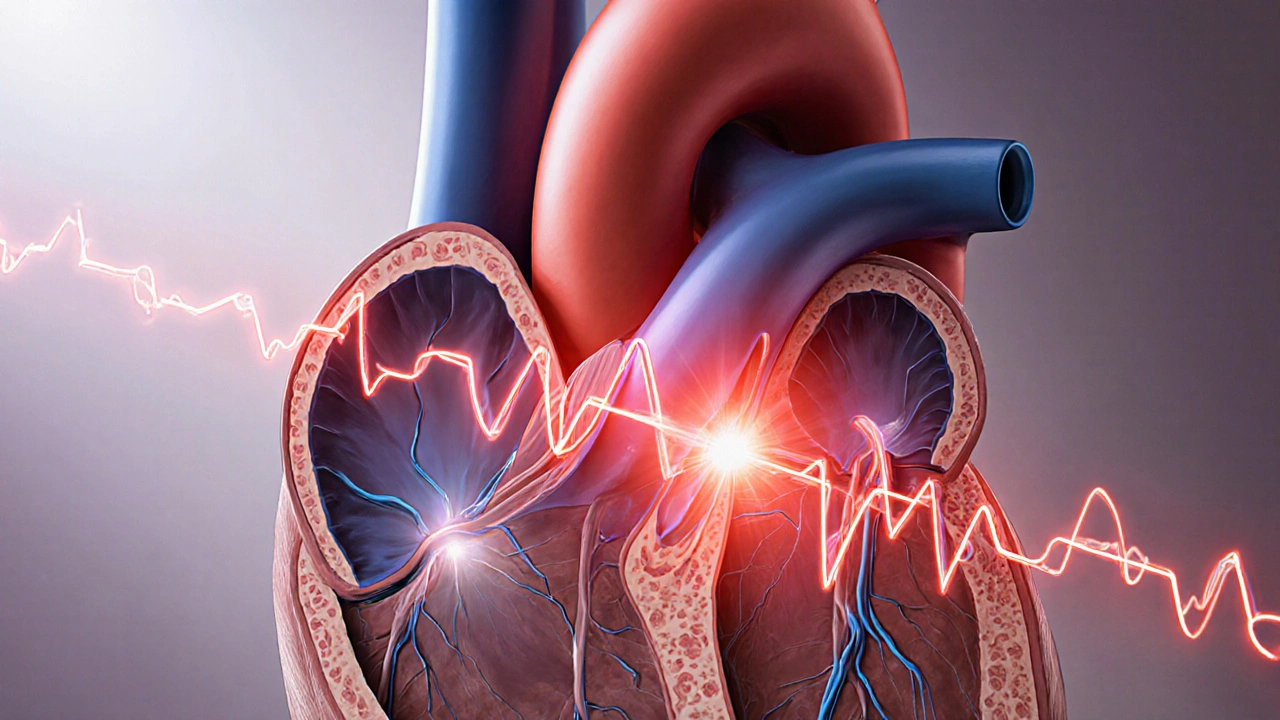AVRT (Atrioventricular Reentrant Tachycardia) – Guide to Symptoms, Diagnosis & Treatment
When dealing with AVRT, a rapid heart rhythm caused by an extra electrical pathway between the atria and ventricles. Also called Atrioventricular Re‑entry Tachycardia, it can trigger sudden palpitations, dizziness, or shortness of breath. Understanding how it works helps you act fast and avoid complications.
Cardiac arrhythmia, any irregular heart rhythm including AVRT falls under the broader category of rhythm disorders. To pinpoint AVRT, doctors rely on an electrophysiology study—a test that maps the heart’s electrical circuit. Catheter ablation, a minimally invasive procedure that destroys the abnormal pathway offers a long‑term cure for many patients. When medication is preferred, beta‑blockers, drugs that slow heart rate and reduce stress on the heart are commonly prescribed. An ECG or wearable monitor can capture the characteristic “short‑lasting spikes” that signal an episode, letting you and your clinician decide on next steps.
Below you’ll find a curated set of articles that dive deep into related topics—ranging from medication safety, heart‑health nutrition, to practical tips for managing symptoms during daily life. Whether you’re looking for the latest on anti‑arrhythmic drugs, lifestyle tweaks that lower episode frequency, or step‑by‑step guides to talking with your doctor, the collection equips you with clear, actionable information.

Supraventricular Tachycardia Types Explained: AVNRT, AVRT, Atrial Tachycardia & More
- by Colin Edward Egan
- on 14 Oct 2025
Learn the key SVT types-AVNRT, AVRT, atrial tachycardia, and more-how they differ, how they're diagnosed, and the best treatment options.
